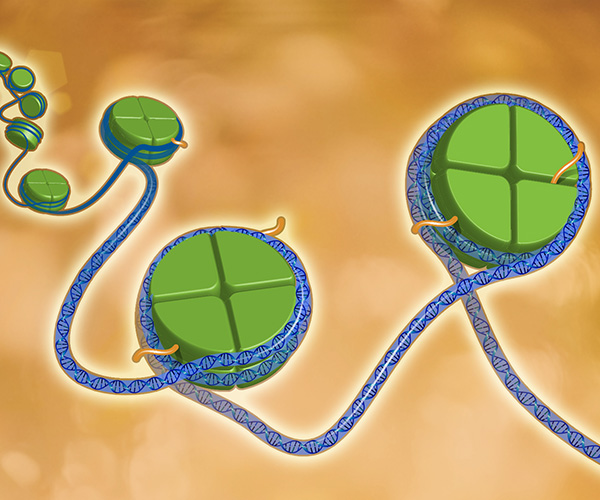
Epigenetic changes modify the "backbone" that supports the DNA sequence. These modifications influence when and how often a gene is active.
Credit: Darryl Leja, NHGRI.
Studying genetic overgrowth disorders, in which various tissues and organs grow too large, provides insights into the mechanisms that regulate body size. As scientists have made progress in identifying the causes of these rare disorders, they have found that many result from variants in genes involved in epigenetic regulation—changes to DNA that affect the degree to which genes are turned on or off.
- In a recent review article, scientists from the Baron Lab reflect on insights gained from studying monogenic overgrowth disorders—those caused by variants in a single gene—and explored potential ways in which epigenetics may help regulate body size.
- Different monogenic overgrowth disorders result from variants in different genes. This includes genes that provide instructions for enzymes that modify DNA, those that modify DNA-associated proteins, and those that recognize epigenetic modifications and mediate their effects. It remains unclear why these diverse variants cause such similar physical effects.
- NICHD’s Julian Lui, Ph.D., and Jeff Baron, M.D., propose a model in which crosstalk among different epigenetic regulators results in a common epigenomic “landscape” that alters the cell-signaling networks regulating growth.
- A better understanding of the mechanisms by which epigenetic changes cause overgrowth will aid development of therapies to manage overgrowth syndromes.
Reference
Lui JC, Baron J. Epigenetic causes of overgrowth syndromes. J Clin Endocrinol Metab DOI: 10.1210/clinem/dgad420 (2024)
Learn more about the Developmental Endocrinology, Metabolism, Genetics and Endocrine Oncology group: https://www.nichd.nih.gov/about/org/dir/affinity-groups/DEMG-EO
 BACK TO TOP
BACK TO TOP